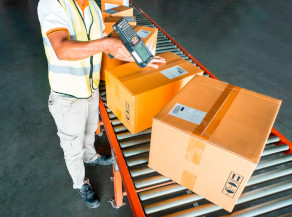What is the best way to select a Warehouse Management System (WMS)?
When selecting a Warehouse Management System (WMS), the two most important questions to ask are:
- What do you need the WMS to accomplish—i.e., what is the business problem you are trying to solve? and,
- What will be your return on investment (ROI)? When calculating the ROI, be sure to consider labor costs, including what you are spending now compared to what you could save with a WMS.
In addition, remember to factor in accuracy—How much is inaccuracy costing you now?—as well as throughput—Could your warehouse be getting more done? Problems with accuracy and throughput contribute to customer satisfaction. If customers are complaining because their orders are incomplete or not arriving fast enough, you risk losing them to your competition.
Think of that as a “silent expense,” one that cannot be seen, but is proven by the fact that your sales aren’t growing as fast as those of your competitors. When you are noticing issues like these, it is time to invest in getting your warehouse implemented on a software platform.
It is also critical to evaluate the experience of the Warehouse Management System (WMS) implementation team. The more experienced the team, the better. Look for vendors who have solved challenges like yours and worked in similar environments. You need to be able to communicate openly and honestly with them and they should be engineers who can design a WMS that is unique to the needs of your warehouse. Each warehouse is different. You need a Warehouse Management System (WMS) that is customized to your processes and the product that you’re selling.
Lastly, it is important to look for software that is pliable. You need a solution that can address the issues in your warehouse today and evolve with you as your business grows. Find a vendor that you trust, respect, and can consider a true business partner for the long term.
Do all Warehouse Management Systems solutions have a Warehouse Control System component?
No, all WMS solutions do not include a Warehouse Control System (WCS) component. In fact, very few do. Even if you don’t have automation today but plan on growing and adding automated storage and retrieval systems at some point, it is essential that the WCS you chose will be able to seamlessly integrate with a WCS. Adding bolt-on WCS modules each time you add an automated feature can quickly lead to incompatibility issues. It is much more effective to plan ahead with a WMS that can grow with you and integrate WCS and WES as needed. That means you want a WMS that is feature rich. It needs to be able to grow with your business and easily adapt as you add technologies and capabilities—at the station level, item level, zone level, and for the warehouse as a whole.
What are the goals of a Warehouse Management System implementation?
The goals of a WMS implementation should be enhanced productivity and accuracy, along with the capabilities to adapt to your growing business and introduce automation to lower costs. With the right WMS vendor, your WMS can be customized as needed, ensuring that you continue to optimize performance throughout all warehouse operations.

